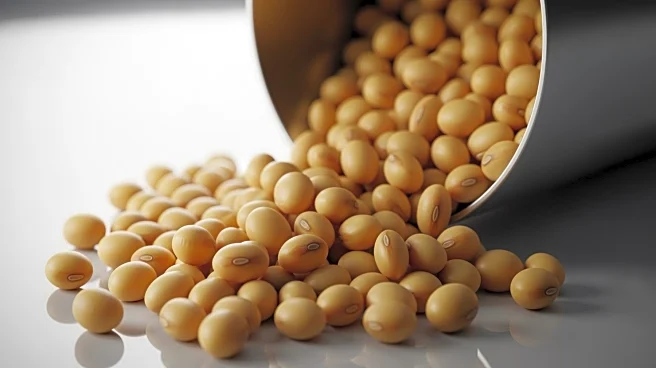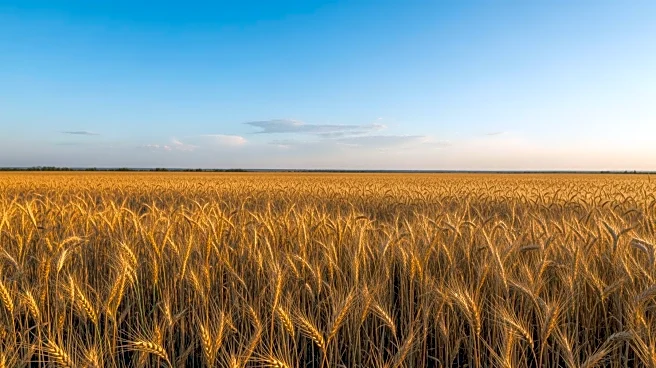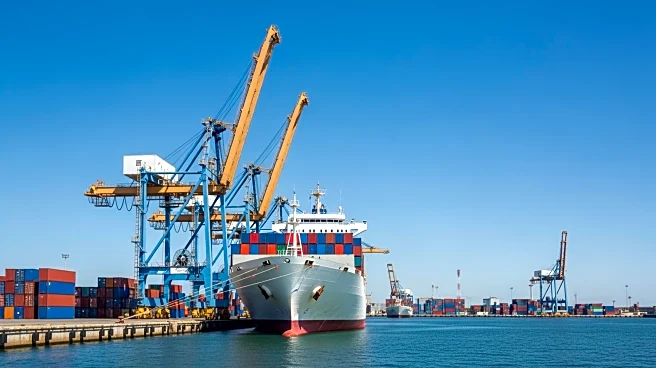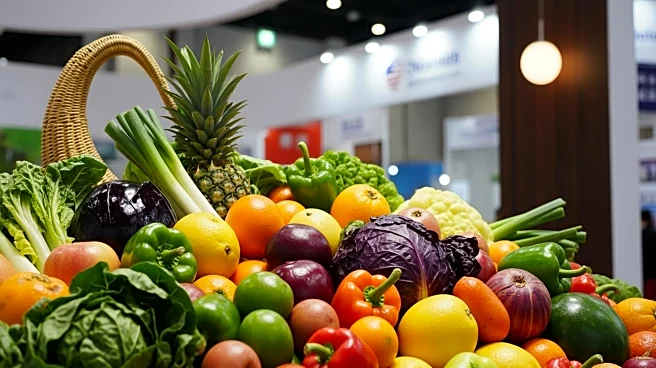What's Happening?
The soybean market is experiencing significant pressure as futures closed down nearly 27 cents on Thursday, November 6, 2025. This decline is attributed to several factors, including the absence of new soybean purchases from China following a recent trade
agreement announcement. The market is also reacting to news that China's state grain group COFCO signed a soybean trade agreement, though details remain unclear. Additionally, the grain sector is under pressure as profits are taken from recent long positions. Despite rumors of China purchasing U.S. wheat, the market has not seen substantial support, reflecting a 'buy the rumor, sell the fact' reaction. The livestock market is similarly affected, with live cattle and feeder cattle prices dropping significantly.
Why It's Important?
The current downturn in the soybean market highlights the volatility and uncertainty in agricultural trade, particularly with China, a major consumer of U.S. soybeans. The lack of clarity in trade agreements and the absence of significant purchases from China could have broader implications for U.S. farmers and the agricultural sector. This situation underscores the challenges faced by U.S. commodities in securing meaningful demand from international markets, which is crucial for sustaining price rallies. The livestock market's decline further reflects the interconnectedness of agricultural commodities and the broader economic impacts of trade policies and agreements.
What's Next?
Market participants are closely monitoring developments in trade agreements and potential rulings from the Supreme Court regarding tariffs imposed by President Trump. These factors could influence future market movements and demand for U.S. agricultural products. Stakeholders, including farmers and traders, are likely to remain cautious, seeking clarity on trade policies and agreements that could impact their operations and profitability.
Beyond the Headlines
The ongoing uncertainty in trade agreements and market reactions may lead to longer-term shifts in agricultural trade strategies and policies. Farmers and traders might need to adapt to changing demand patterns and explore alternative markets to mitigate risks associated with geopolitical tensions and trade uncertainties.














